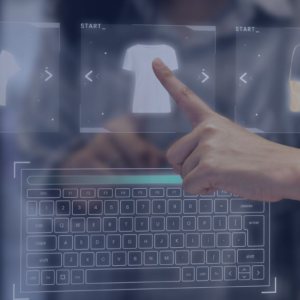D2C – These three letters have disrupted the complete fashion & apparel ecosystem… And how!!
Gone are the days when the shoppers traveled miles to a mall, and went through aisles of merchandise to buy that one pink shirt they want.
Today they open an app sit on their couch and click a few buttons to buy the same pink shirt… This personalized and convenient shopping experience has converted many people into online shoppers.
Many new-age D2C brands have leveraged this and traditional retail is in the doldrums!
This shift comes with its own challenges.
While the front end of the D2C brands is completely tech-driven, the back end seems to rely on old-school methods. Coupled with the supply chain challenges faced by most manufacturers, the brands do not find it easy to shift to the D2C model.
The only answer to these woes is DIGITISATION in the backend!
Large Width & Low Depth
Most D2C brands need large widths to offer variety & low depths to optimize inventory. However, traditional manufacturers rely on scale to drive efficiencies; be it textile or garment manufacturers.
This has posed a roadblock for many D2C brands; wherein their growth has been limited; sometimes to a single category.
In order to sustain growth and scale, these D2C brands need to leverage technology, not just in the front end, but also in the back end.
One way D2C brands can leverage technology is through automating the complete supply chain; from design to delivery.
Technology in Design :
Traditionally design teams relied on reading catwalk trends, designing a range one year in advance & relying on emails and pen drives to send tech packs from one team to another. This led to miscommunications & lost information, impacting the production timelines too.
And once the designer left the team, all the historical data & designs went with him/her. Creating a repository was next to impossible.
With technology, this process can be streamlined giving visibility to everyone down the chain. The tech packs today can be created directly on PLM systems and sent to merchandisers for costing & sampling. This doesn’t just give everyone visibility, it also leads to proactive merchandising & ensures goods are delivered on time always.
The dependence on the designer or team is also reduced, as all historical design data stay on the system for future reference.
Technology in Sourcing :
By digitizing processes such as merchandising, quality, costing, etc., the D2C brands can improve efficiencies and reduce costs. This will also give end-to-end visibility and lead to proactive sourcing.
Traditionally, merchandisers & sourcing teams work through Excel & long email chains. Collating this information is not just time-consuming, but also prone to human errors. With digital platforms such as BlueKaktus, they can see all data at the click of a button. All vendors, raw material suppliers, factories to quality teams, everyone is mapped on these digital platforms. They do not just give end-to-end visibility of the product at different phases of its lifecycle, it also helps in detecting tomorrow’s problems today. By doing so, a lot of issues that impact the end deliveries are dealt with proactively. Leading to an efficient & cost-effective sourcing supply chain.
Technology in Quality :
We all have faced tough situations due to issues in product quality, be it delays in deliveries or additional costs Now what if these issues can be detected within seconds of it happening & corrective actions be taken?
This is very much possible by introducing tech in quality. Early detection of defects through simple & easy tech-based systems leads to corrective actions taken & ensures goods reach the warehouse on time. It doesn’t just create an efficient quality process but also relieves the dependence on human intervention. A quality manager can be sitting in a remote location and monitoring the output & making course corrections. This impacts the overall costs of the product & the overheads at an organizational level.
Apart from the above aspects, D2C brands can leverage technology in the back end through logistics automation. By automating processes such as order fulfillment and inventory management, these brands can improve efficiency and reduce costs. This can enable them to offer a wider range of products without increasing complexity.
In conclusion, D2C brands can leverage technology in the back end to achieve large width and lower depth, enabling them to cater to a larger customer base and reduce complexity in their supply chain and inventory management. By leveraging data analytics, supply chain automation, and website optimization, D2C brands can sustain growth and scale their businesses while maintaining a personalized and convenient shopping experience for their customers.




